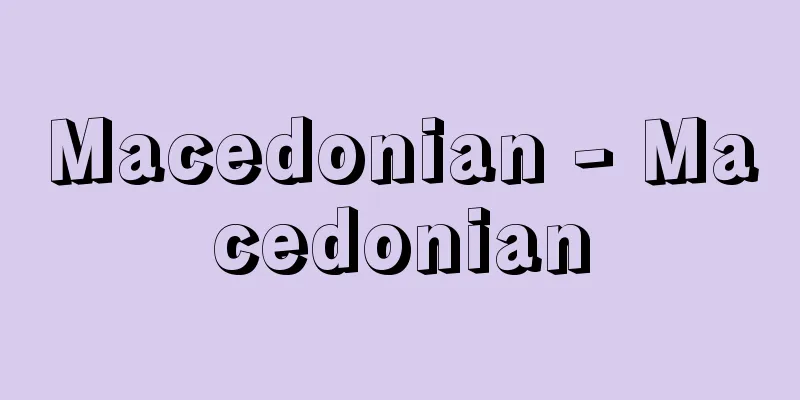Thyroxine - Thyroxine

|
Thyroxine is a thyroid hormone. Its molecular formula is C 15 H 11 I 4 NO 4 and its molecular weight is 776.88. It is an alpha-amino acid containing iodine. Amino acids are the building blocks of proteins and peptides, and also the precursors of small molecules with important and diverse biological roles, including thyroxine. Thyroxine is formed by the linkage of iodized tyrosine in thyroglobulin. This precursor is proteolyzed to produce thyroxine. In 1915, American chemist E. C. Kendall isolated a crystalline active substance containing iodine from the alkaline hydrolyzate of thyroglobulin, a unique iodoprotein found in large quantities in the thyroid gland, and named it thyroxine. However, British chemist Charles Robert Harington (1897-1972) had doubts about this chemical structure, and in 1926 he deduced the correct structural formula, and in 1927, in collaboration with George Barger (1878-1939), he succeeded in synthesizing the substance and proving its chemical structure. Thyroxine is thyronine ( T4 ) which is produced from thyroglobulin in the thyroid gland and contains four iodines, the iodines being at positions 3, 5, 3', and 5'. When the iodine at the 5' position is removed, it becomes triiodothyronine ( T3 ), and when the iodine at the 5' position is removed, it becomes reverse T3 . T3 has 4 to 5 times more biological activity as a thyroid hormone than T4 , while reverse T3 has almost no activity, making T3 the most important. It is a pale yellow or cream-colored, tasteless, odorless, hygroscopic powder. It is slightly soluble in water, insoluble in acetone, chloroform, and ether, and soluble in alkali. Receptors for fat-soluble hormones (such as steroid hormones) and fat-soluble bioactive substances (such as vitamin A) are mainly found in the nucleus of cells and are called nuclear receptors. These receptor families for fat-soluble bioactive substances act as a superfamily of transcriptional regulators with similar structures and functions, and control the expression of protein genes at the transcription stage. The thyroxine receptor belongs to the nuclear receptor superfamily, and controls morphogenesis by inducing morphogen differentiation, inducing the metamorphosis from tadpoles to frogs (morphogens are substances that promote differentiation according to a concentration gradient created by the diffusion and transport of substances synthesized in the embryo. For example, bicoid protein and nanoproteins in fertilized eggs of Drosophila melanogaster). In humans, it is used as a replacement therapy for hypothyroidism, including myxedema and cretinism. For physiological effects, see the Thyroid Gland entry. [Teruyoshi Arima, Taro Arima, and Tamiyo Takeuchi] [References] | | | | | | | | |©Shogakukan "> The structure of thyroxine Source: Shogakukan Encyclopedia Nipponica About Encyclopedia Nipponica Information | Legend |
|
甲状腺ホルモン(こうじょうせんほるもん)の一つで、サイロキシンともいう。分子式C15H11I4NO4、分子量776.88。ヨウ素を含む一種のα(アルファ)-アミノ酸である。アミノ酸はタンパクとペプチドの素材であり、重要で多様な生物学的役割をもつ小分子(チロキシンもその一つ)の前駆体でもある。チロキシンはチログロブリン内のチロシンのヨウ素化との連結によって形成される。この前駆体がタンパク分解されて、チロキシンとなる。1915年アメリカの化学者E・C・ケンドルは、甲状腺に多量に存在する特異なヨードタンパク質チログロブリンのアルカリ加水分解物からヨウ素を含む活性物質を結晶状に単離し、これをチロキシンと命名したが、イギリスの化学者ハリントンCharles Robert Harington(1897―1972)はこの化学構造に疑問をもって、正しい構造式を1926年に推定し、1927年にはバージャーGeorge Barger(1878―1939)と共同で合成に成功、化学構造を立証した。 チロキシンは甲状腺内でチログロブリンから生成された四つのヨウ素を含むチロニンtetraiodthyronine(T4)で、ヨウ素の位置がそれぞれ3、5、3'、5'にあるが、この5'の位置のヨウ素がとれたのがトリヨードチロニン(T3)で、また5の位置のヨウ素がとれたものがリバースT3である。甲状腺ホルモンとしての生物学的活性はT3がT4の4~5倍もあり、リバースT3にはほとんどなく、T3がもっとも重要である。性状は淡黄またはクリーム色で無味・無臭、吸湿性の粉末である。水にはわずかに溶け、アセトン、クロロホルム、エーテルには不溶で、アルカリに可溶である。 脂溶性ホルモン(ステロイドホルモンなど)や脂溶性生理活性物質(ビタミンAなど)の受容体(レセプター)は、おもに細胞内の核にあり、核内受容体nuclear receptorとよばれている。これらの脂溶性生理活性物質受容体群(ファミリー)は、互いに構造・機能が類似した転写調節因子群(スーパーファミリー)として働き、タンパク遺伝子の発現を転写の段階で制御している。チロキシン受容体は核内受容体スーパーファミリーに属し、モルフォゲンmorphogen分化を誘導して形態形成を制御し、オタマジャクシからカエルへの変態を誘導する(モルフォゲンとは、胚(はい)の中で合成された物質の拡散・運搬によってできる濃度勾配(こうばい)に従って分化を促す物質。たとえばショウジョウバエの受精卵のビコイドタンパク、ナノスタンパクなど)。 ヒトでは粘液水腫(すいしゅ)やクレチン症をはじめ、甲状腺機能低下症の補充療法として使われる。なお、生理作用については「甲状腺」の項目を参照されたい。 [有馬暉勝・有馬太郎・竹内多美代] [参照項目] | | | | | | | | |©Shogakukan"> チロキシンの構造 出典 小学館 日本大百科全書(ニッポニカ)日本大百科全書(ニッポニカ)について 情報 | 凡例 |
<<: Glycera chirori (English spelling)
Recommend
Rudel, J.
… The troubadours may be divided into the followi...
Remote psychic response
…One of the paranormal phenomena. It is translate...
Training - Shugyo
As typified by the term "Buddhist training,&...
Muzaffar Shah
…King Sri Paramesvara Deva Shah (reigned 1445-56)...
Aerodynamic heating
A phenomenon in which the air heats up an aircraf...
Hydrofluoric acid (Hydrofluoric acid)
An aqueous solution of hydrogen fluoride (HF). Als...
Cardenas - Lázaro Cárdenas (English spelling)
Mexican politician. Born in Jiquilpan, Michoacán,...
Liang Shuming - Ryo Soumei
Chinese thinker. Born in Guangxi Province. From 1...
Granulosa luteal cells
…This blood is soon absorbed, and the theca inter...
Kennedy family - Kennedys
A powerful family in southwest Scotland. They were...
Cantonese Brocade
… In Japan, ikat weaving developed dramatically f...
machete
...It has a smaller guitar shape and four strings...
Inflammatory cells
...The walls of the ingested bacteria are dissolv...
Antiquity (English spelling)
…He belonged to the second generation of British ...
Reading and pronunciation unification association (English spelling)
A conference convened by the Ministry of Education...









